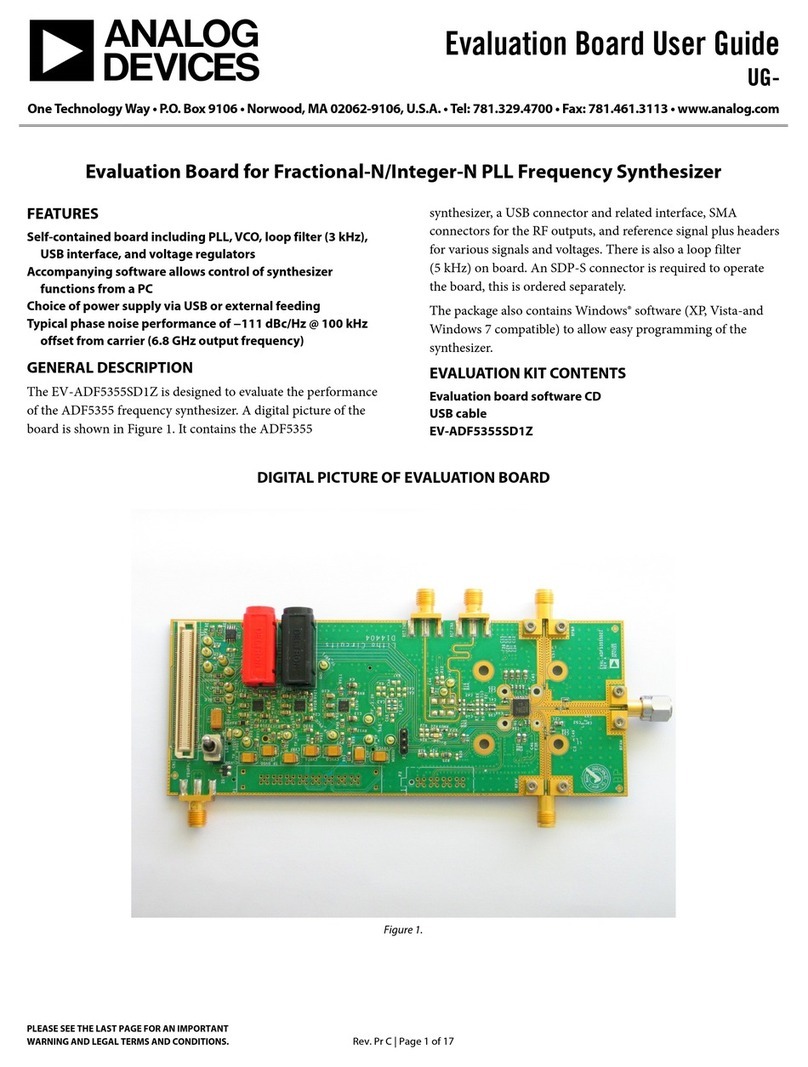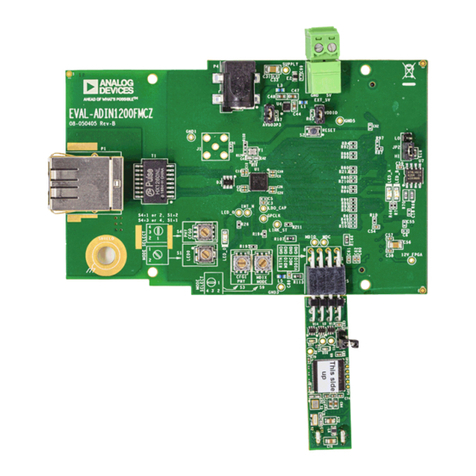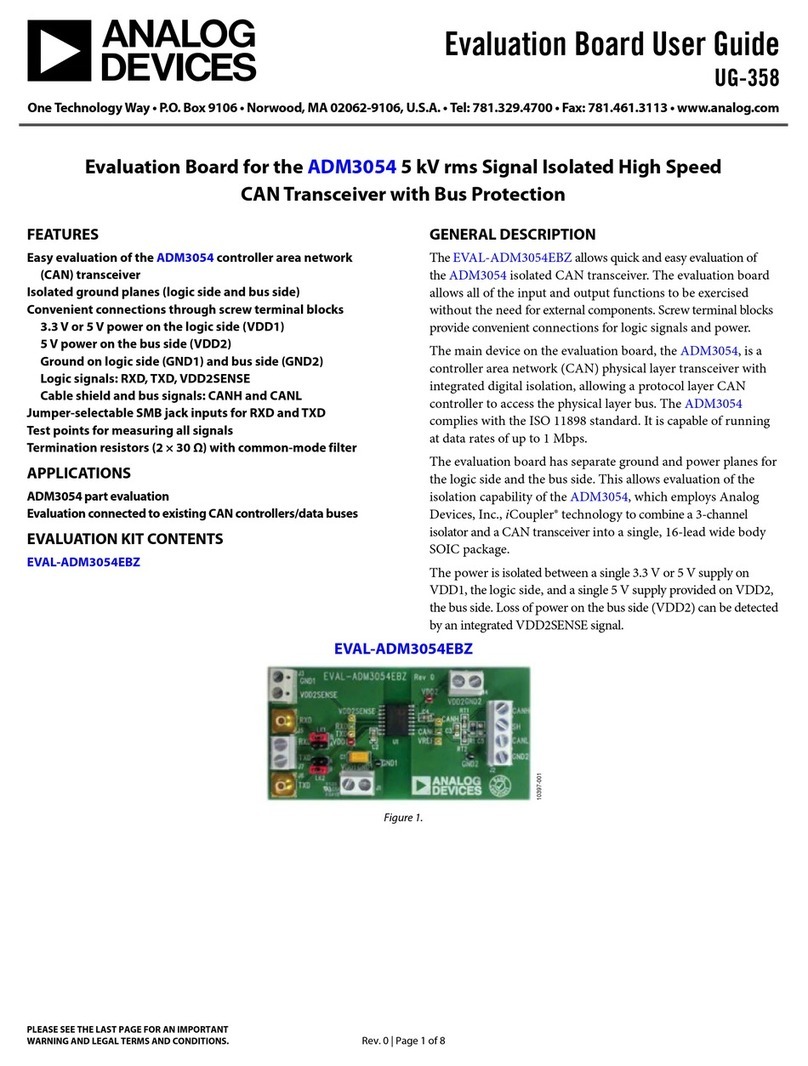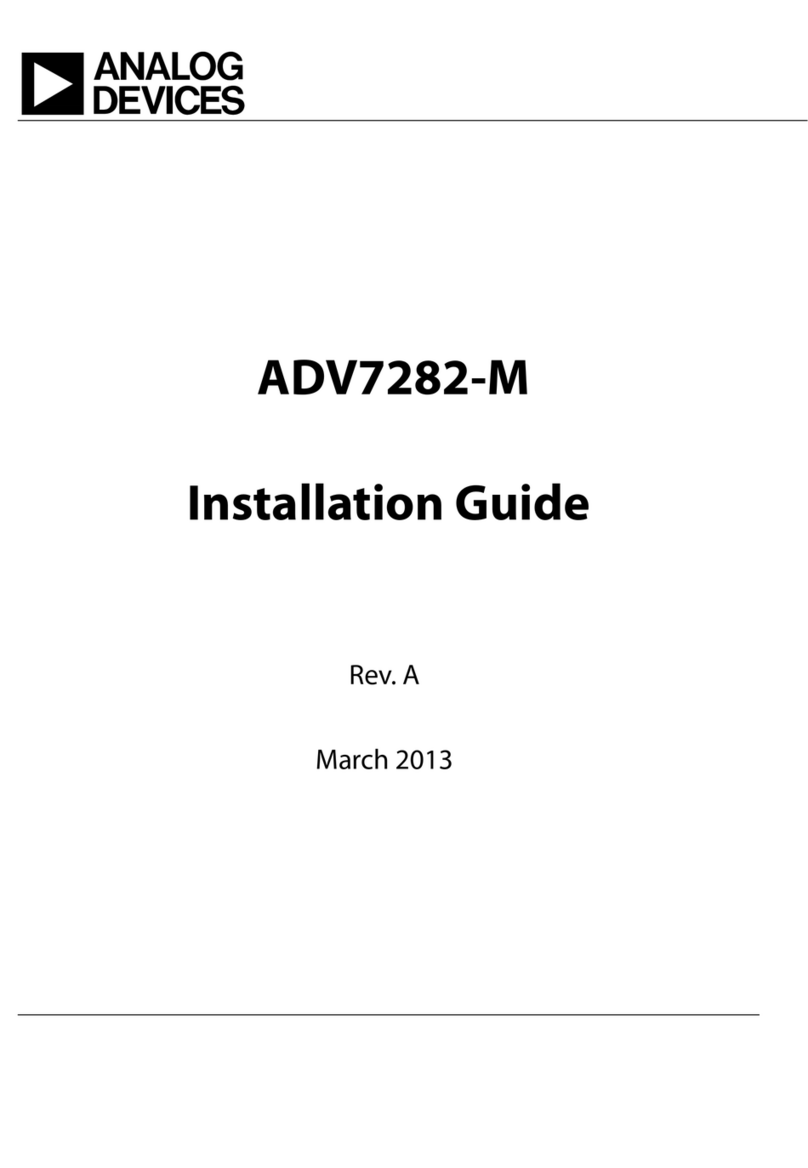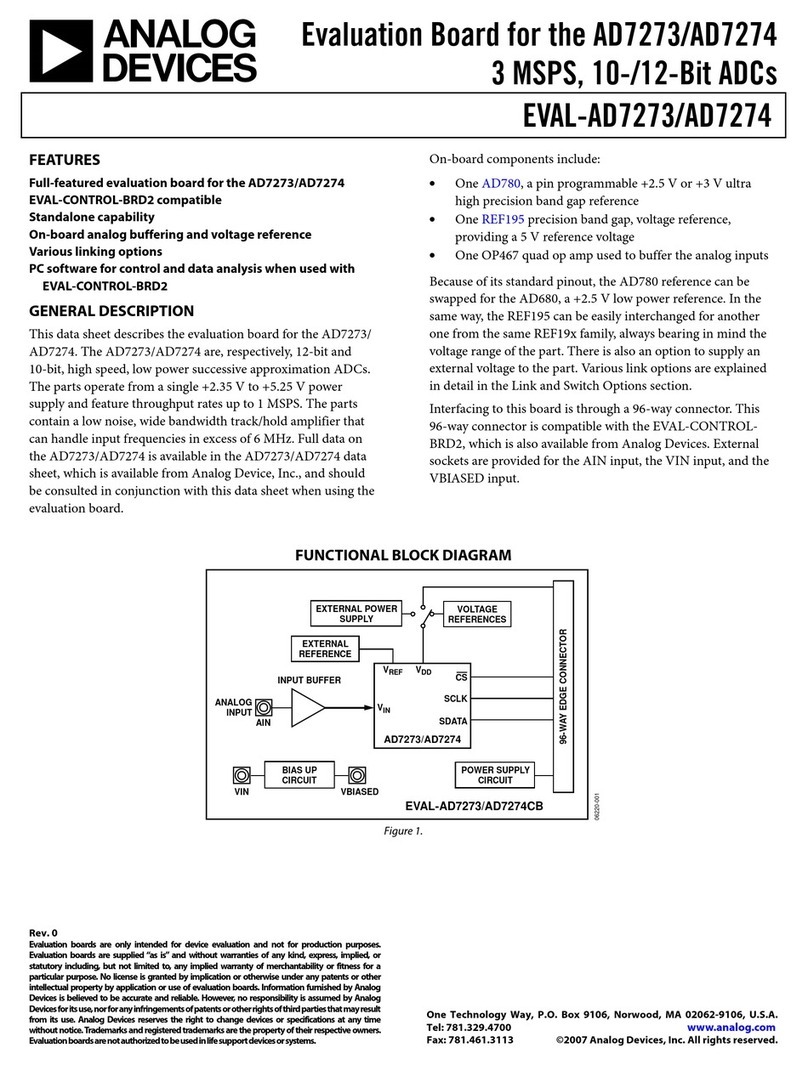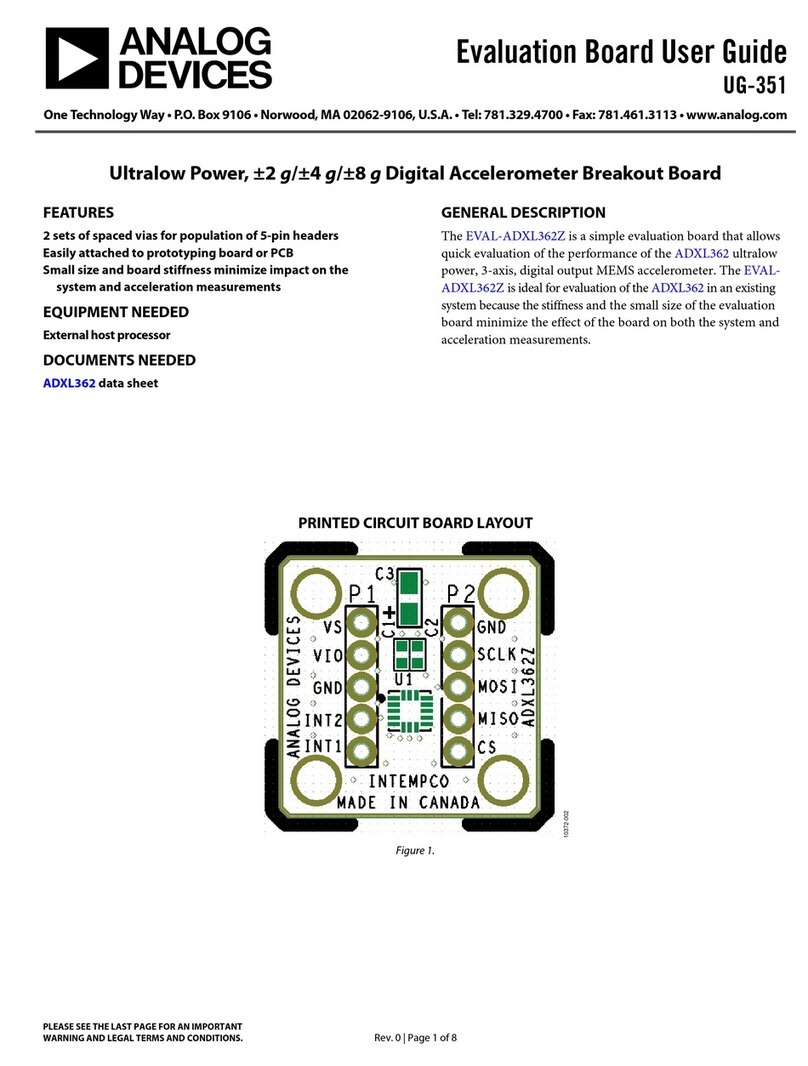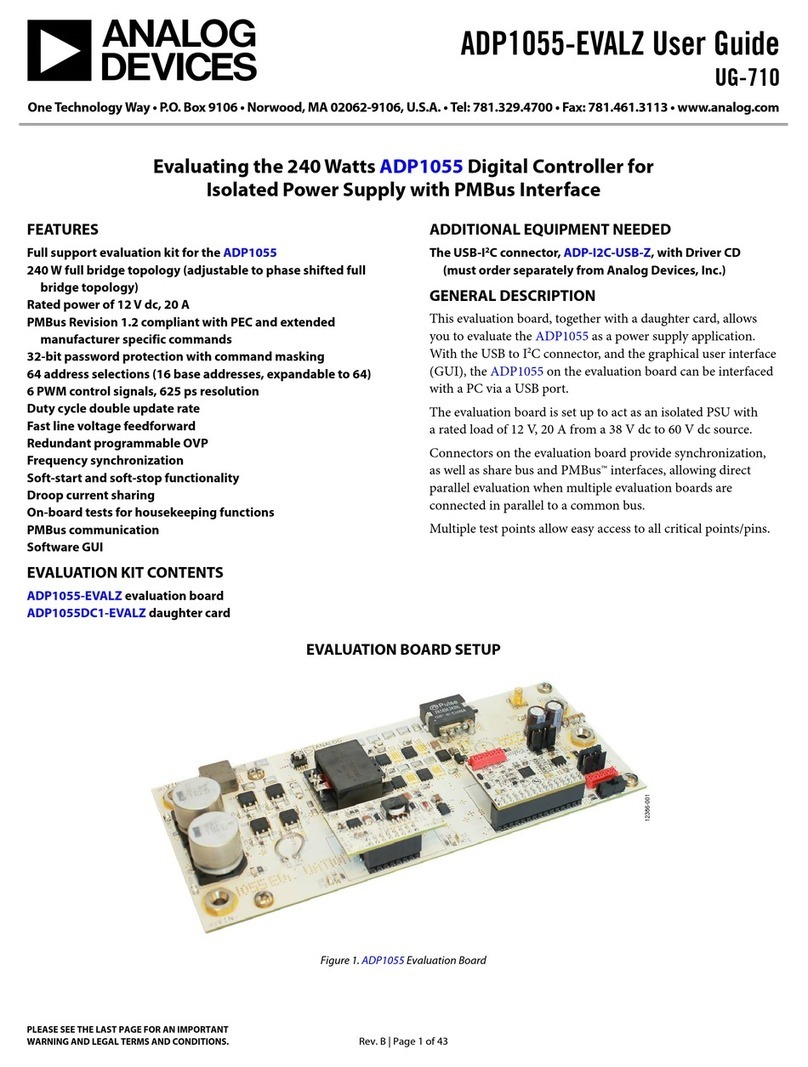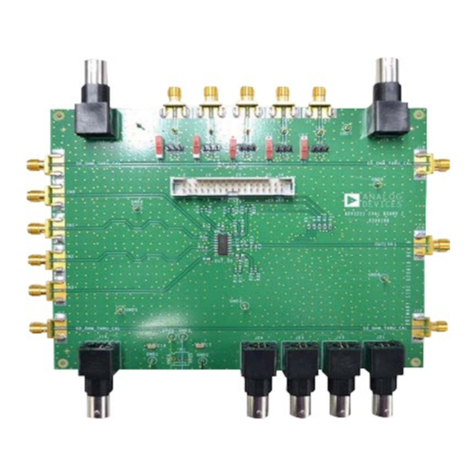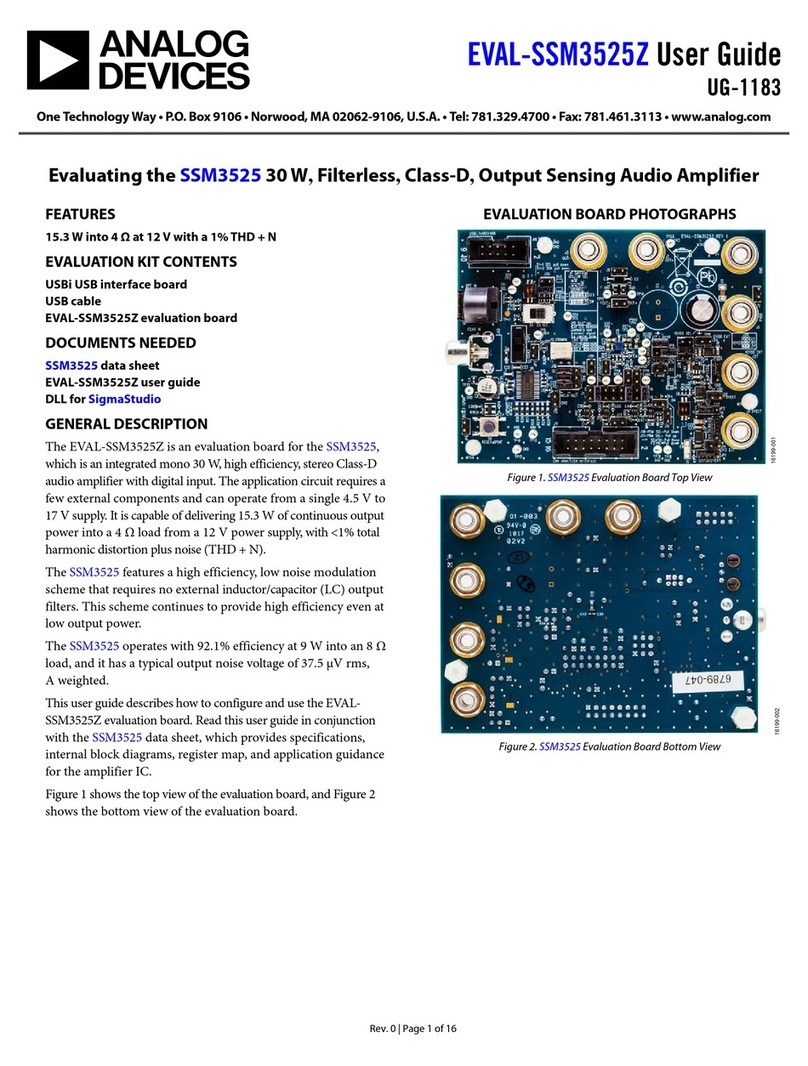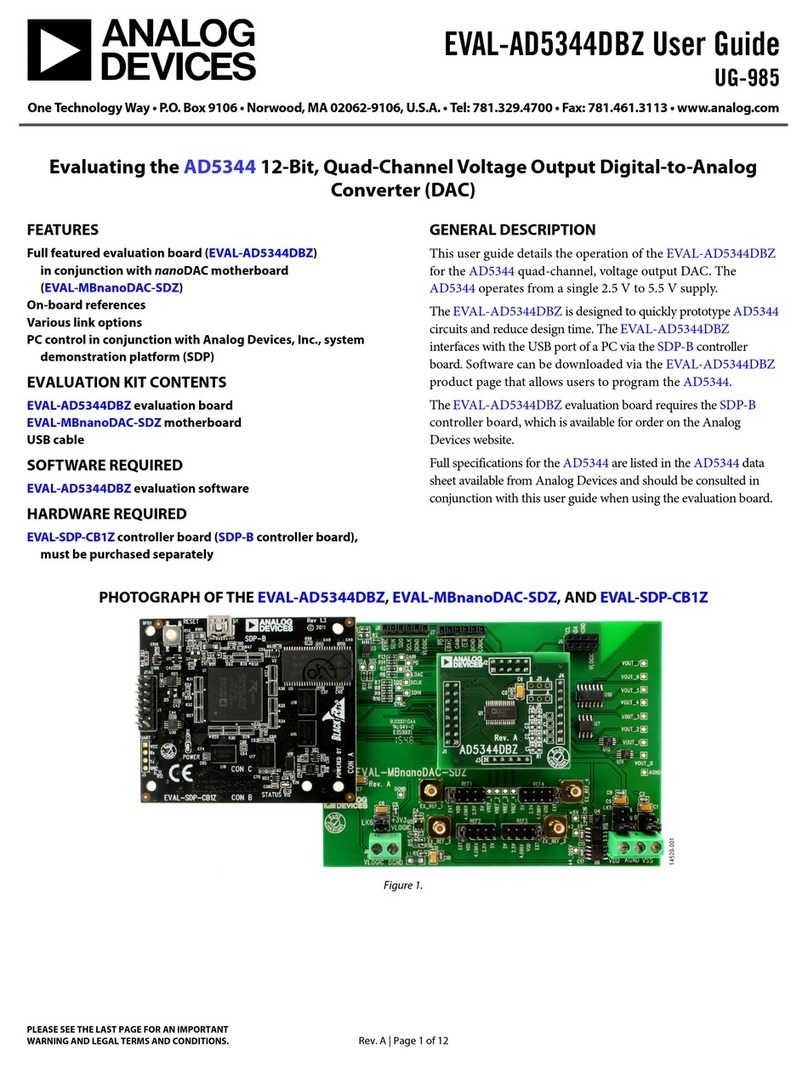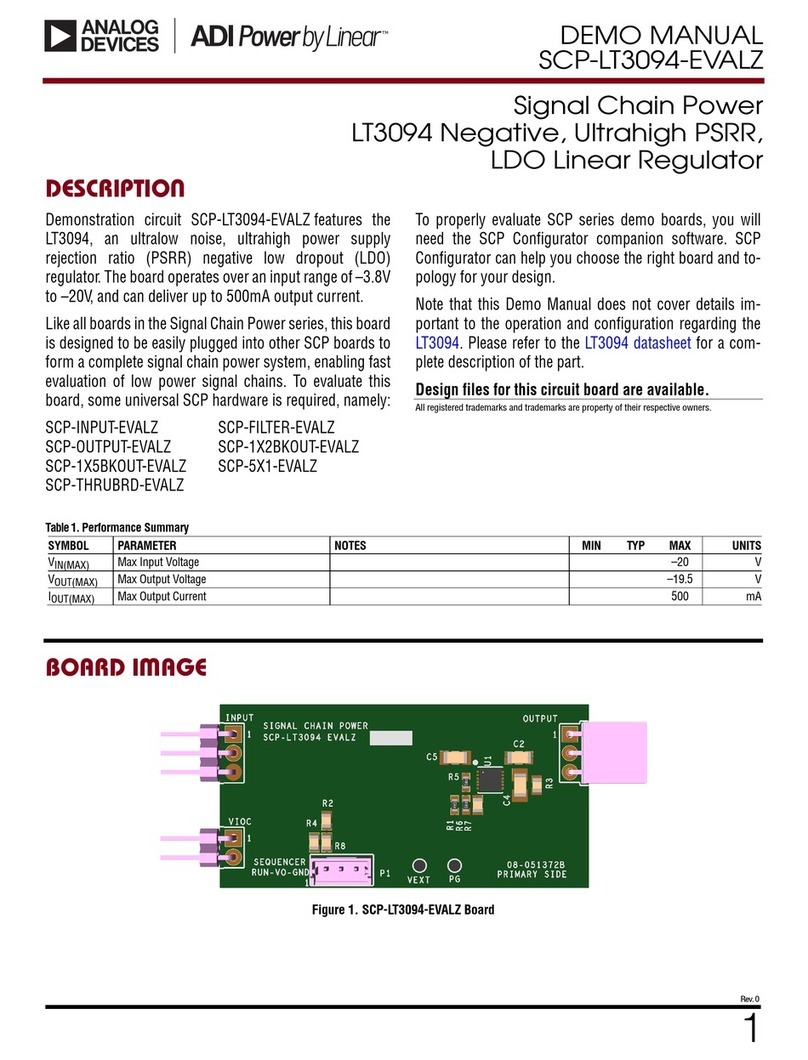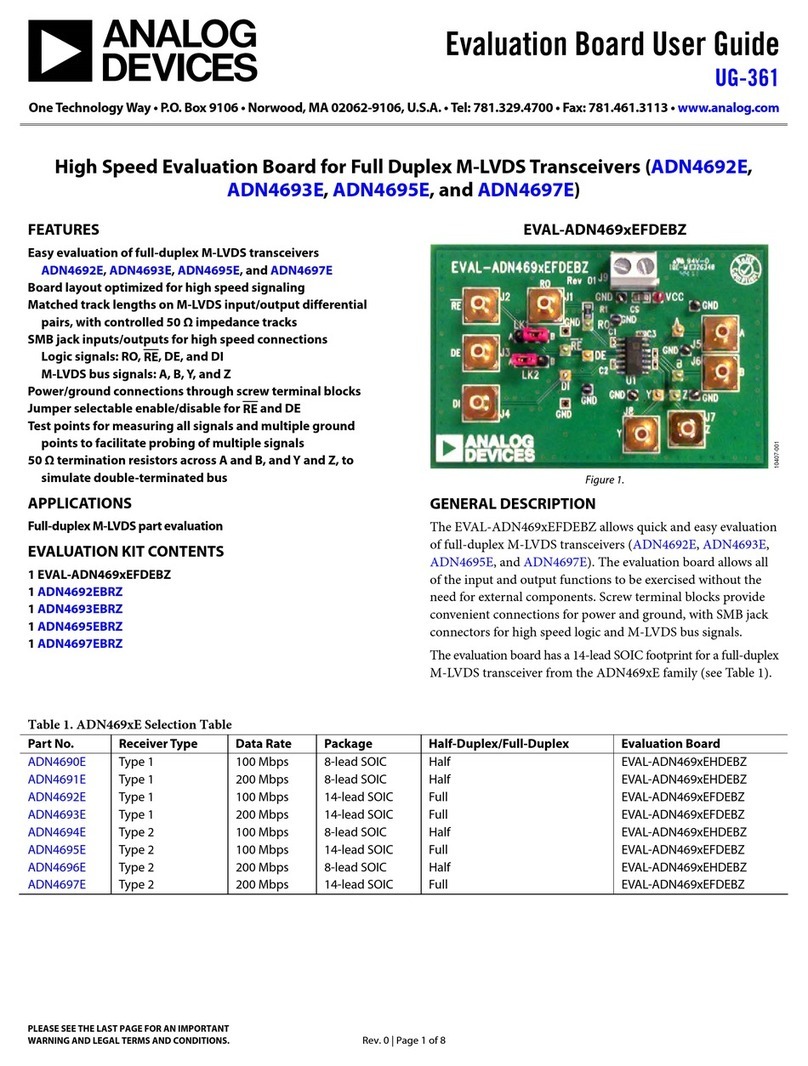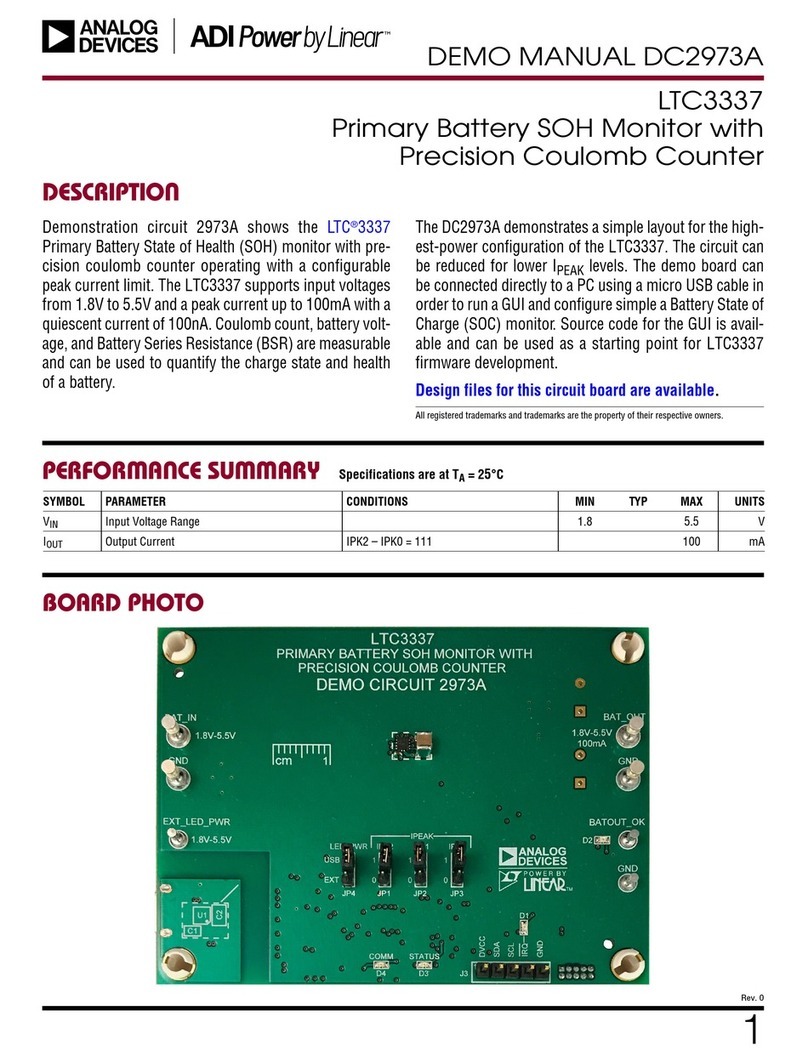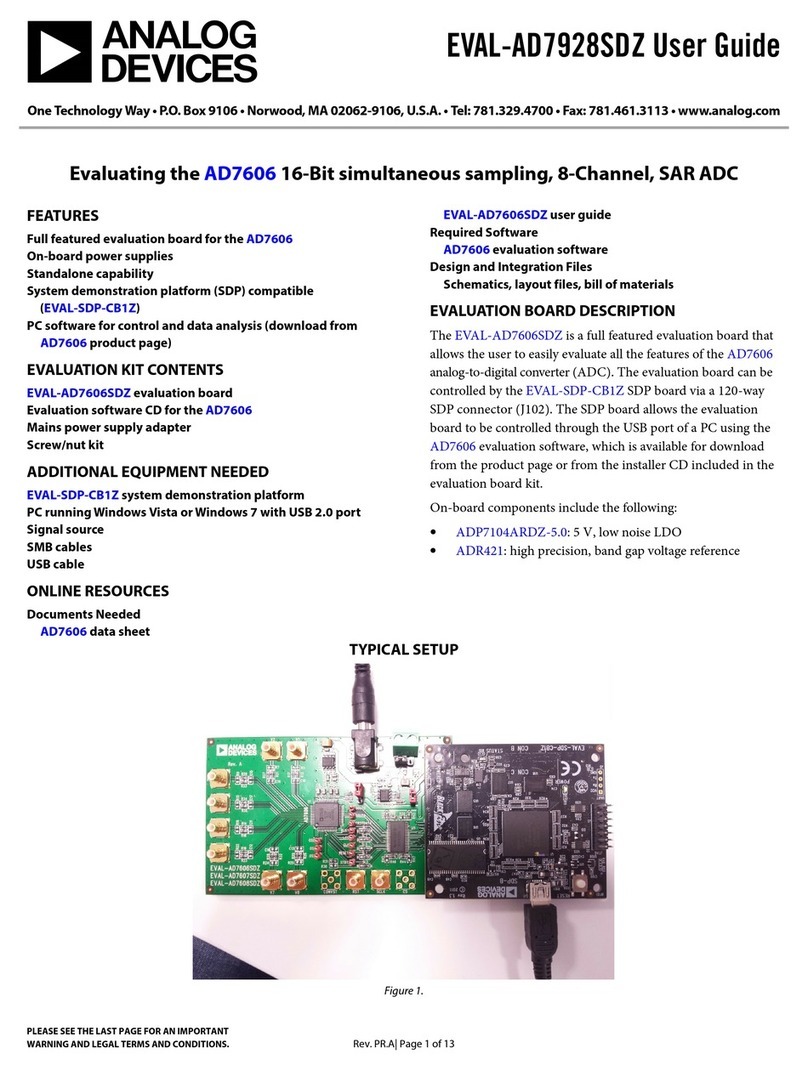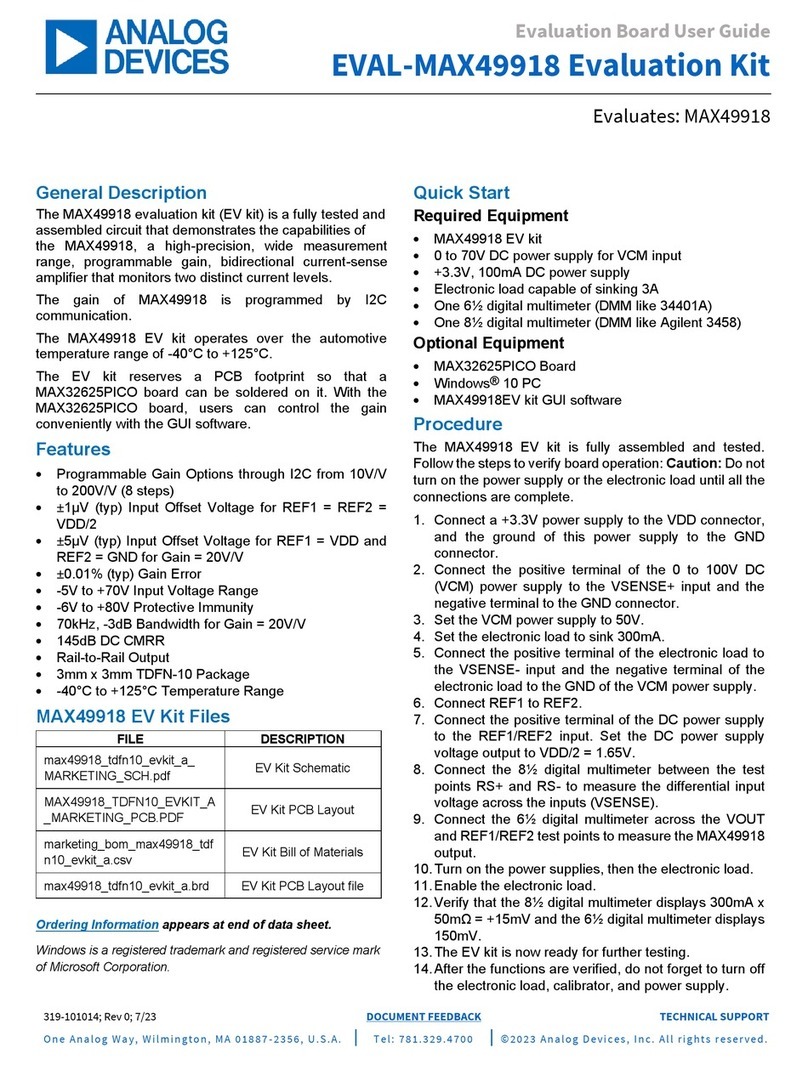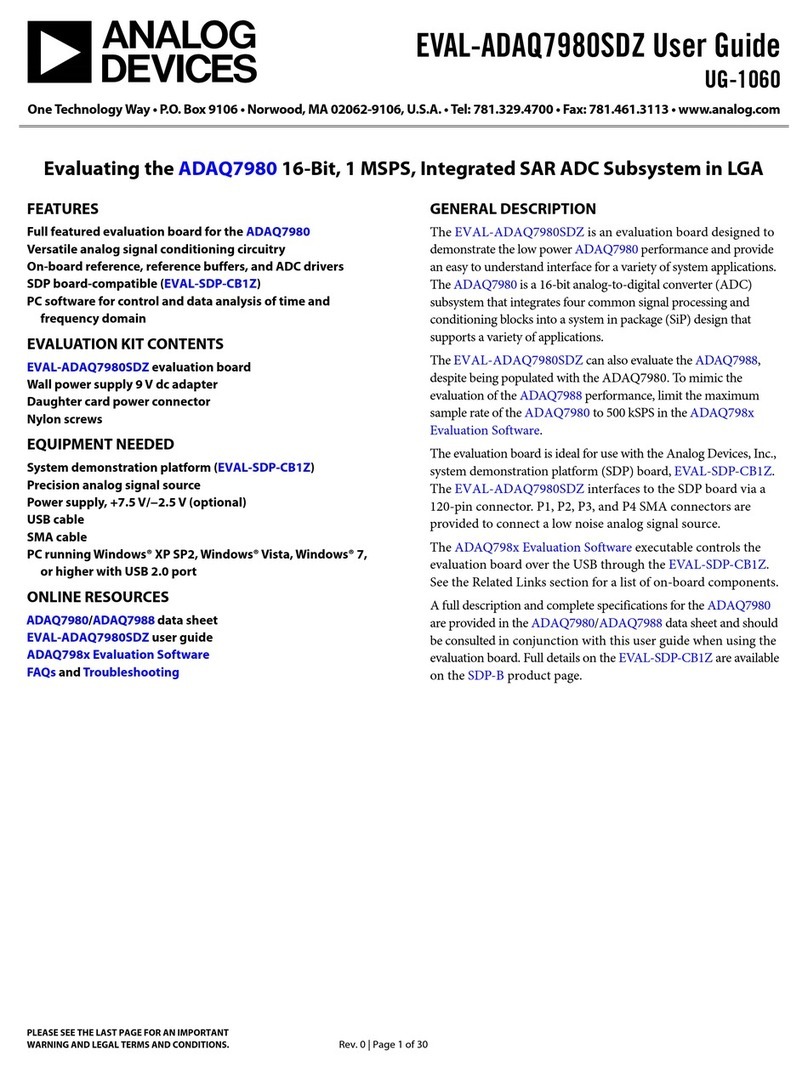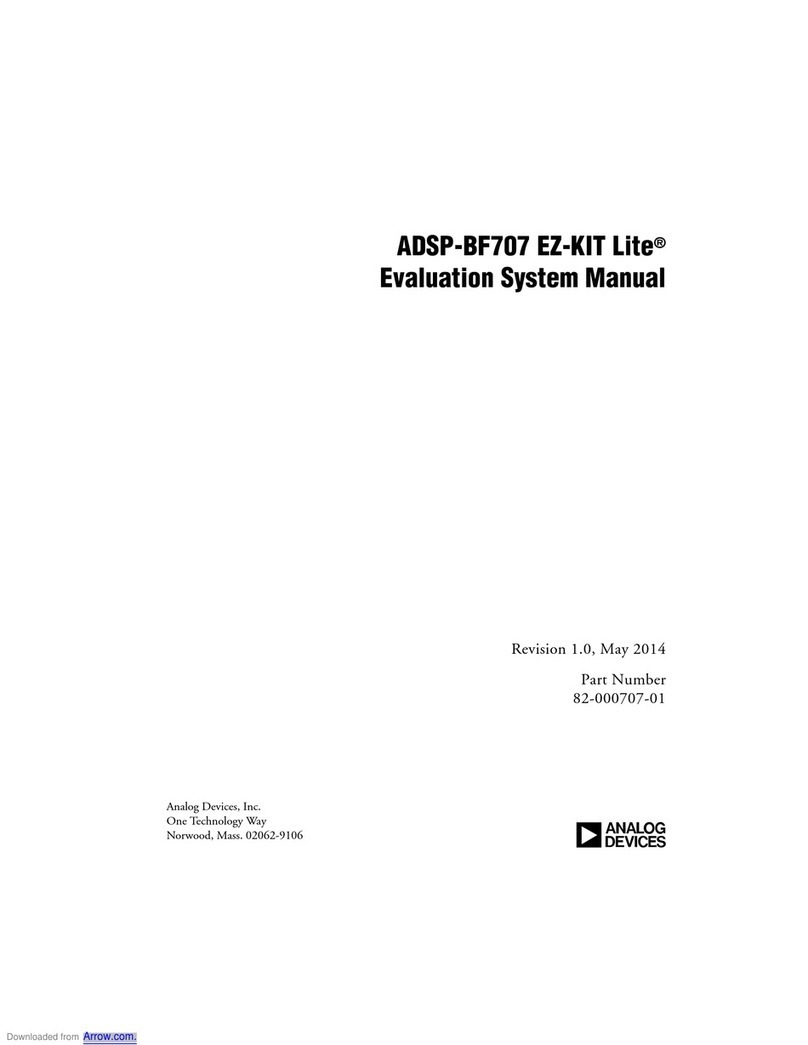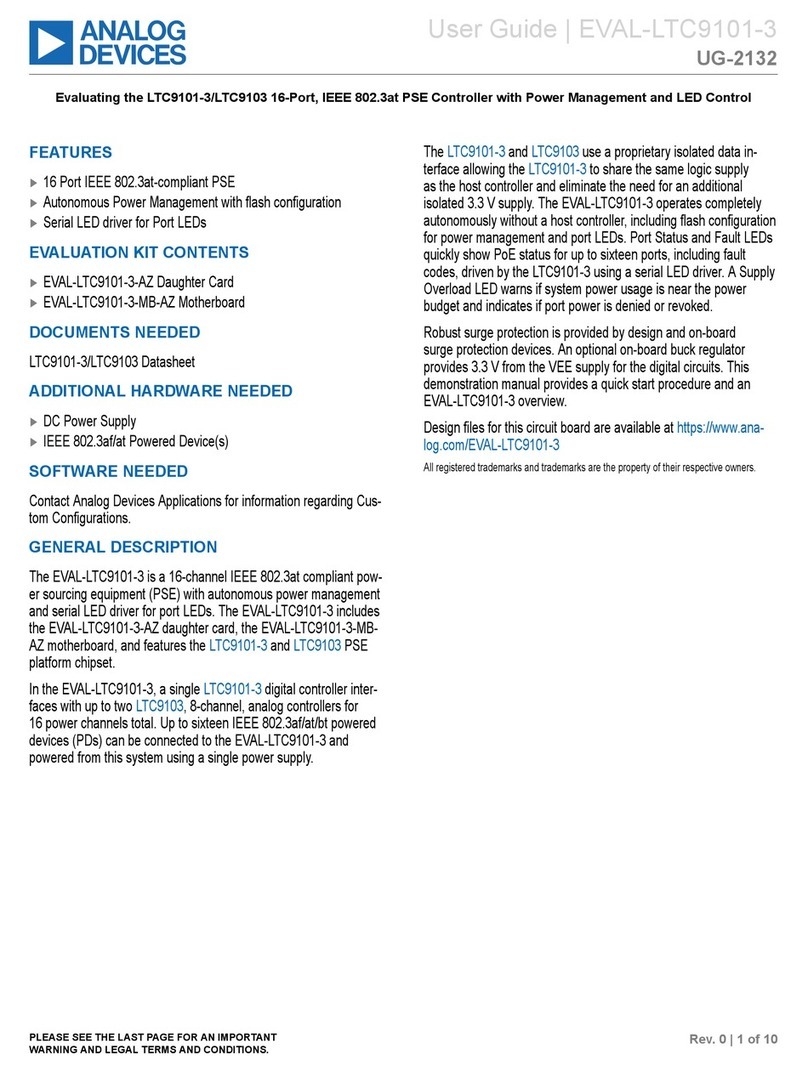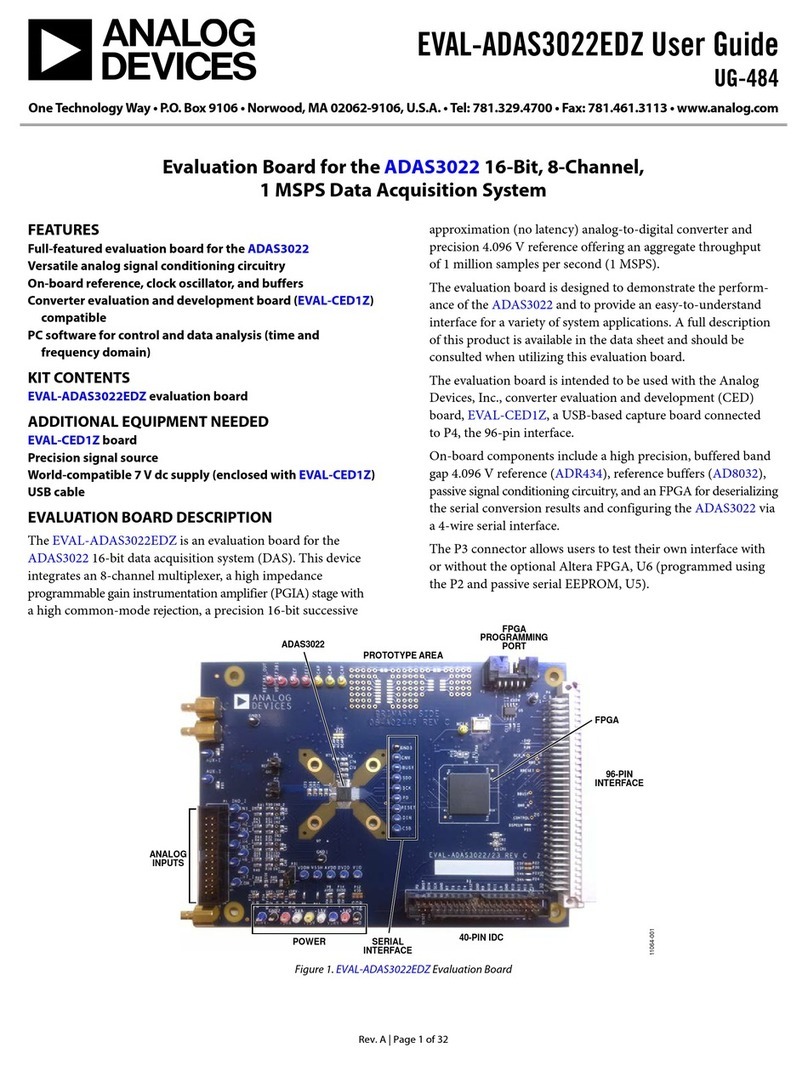
User Guide EVAL-ADAU1861
USING THE EVALUATION BOARD
analog.com Rev. 0 | 10 of 24
CODEC SYSTEM
Clock Option
The EVAL-ADAU1861EBZ has three options for providing a main
clock to the ADAU1861. The default option is to use the on-board
24.576 MHz oscillator. The second option is to provide an external
MCLK signal directly to the XTALI pin of the codec from JP9 and
JP11. The third option is to use the on-board crystal 24.576 MHz.
Refer to Table 4 to check the MCLK settings.
Table 4. MCLK Jumper Settings
Clock Source Jumper Settings External Port
Oscillator Pin 1 to Pin 2 of JP9, Pin 1 to Pin 2 of JP11,
jump JP9 to the left (OSC), and jump JP11 to
the left (MCLK)
Not applicable
Crystal Float JP9 and Pin 2 to Pin 3 of JP11, and jump
JP11 to the right (XTALI_MCLKIN)
Not applicable
External MCLK Pin 2 to Pin 3 of JP9, Pin 1 to Pin 2 of JP11,
jump JP9 to the right (EXT_MCLK), and jump
JP11 to the left (MCLK)
JP9,
EXT_MCLK
pin
Boot-Up Options
Two boot-up options are available for the EVAL-ADAU1861EBZ.
Use JP24 to select the boot-up options, which are self boot enabled
or disabled. When self boot is enabled, the Tensilica HiFi 3z
DSP core of the ADAU1861 loads the program from flash through
QSPI™ with two ROM boot modes that can be selected by JP25.
Power-Down
The EVAL-ADAU1861EBZ can power down all of the analog and
digital circuits of the codec by pressing the S2 button.
AUDIO INPUTS AND OUTPUTS
The EVAL-ADAU1861EBZ has multiple audio input and output
options, including digital and analog, including three analog inputs,
one analog output, eight digital microphone channels, a 2-channel
pulse-density modulation (PDM) output, and two serial audio inter-
face ports.
In addition, for audio tuning, the ADAU1966A also supports a
16-channel digital-to-analog converter. With its default settings, the
ADAU1966A works in standalone mode after power on with a
12.288 MHz oscillator clock input. To save power consumption,
the ADAU1966A works in subordinate mode, 256 × the sampling
frequency (fS), and a TDM 16 with digital audio input from the
ADAU1861 serial audio port, I2S0. To improve performance of the
ADAU1966A output, main mode of the ADAU1966A is suggested
when audio tuning (see Table 5 for additional information).
Table 5. ADAU1966A Configurations
Mode Resistor Installed Resistor Uninstalled
Program R30 R39
Table 5. ADAU1966A Configurations (Continued)
Mode Resistor Installed Resistor Uninstalled
Standalone R39 R30
Main R34 R43
Subordinate R43 R34
To program the ADAU1966A, P14 can be used as the control port
with I2C or SPI.
Analog Inputs
The three analog inputs (P2, P3, and P4) can be configured as
microphone or line inputs. All three inputs are set to differential or
single-ended through JP8, JP9, and JP10. Each analog input can
work with an optional programmable-gain amplifier (PGA). JP5 can
be used to choose mono (only ADC0) or stereo input mode (ADC0
and ADC1).
Refer to Table 6 for the hardware configuration of the analog input
signals. Note that the control register must be changed simultane-
ously.
Table 6. ADC Mode Jumper Settings
ADC No. Mode Jumper Settings
ADC0 Differential Jump JP8 to DIFF
Single-ended Jump JP8 to SINGLE
ADC1 Differential ends Jump JP7 to DIFF
Single-ended Jump JP7 to SINGLE
ADC2 Differential ends Jump JP6to DIFF
Single-ended Jump JP6 to SINGLE
Analog Output
The analog output (P13) can be set as a line output driver or as a
headphone driver. In line output mode, the typical load is 10 kΩ. In
headphone output mode, the typical loads are 16 Ω to 32 Ω. In ad-
dition, the ADAU1966A chip also supports 16 DAC single-channel
analog outputs. Refer to Table 7 for detailed information.
Table 7. DAC Output Interfaces and Signal
Chip Number Function Pin Number and Px Value
ADAU1966A (Single-Ended) DAC1P Pin 3 of P5
DAC2P Pin 2 of P5
DAC3P Pin 3 of P6
DAC4P Pin 2 of P6
DAC5P Pin 3 of P7
DAC6P Pin 2 of P7
DAC7P Pin 3 of P8
DAC8P Pin 2 of P8
DAC9P Pin 3 of P9
DAC10P Pin 2 of P9
DAC11P Pin 3 of P10
DAC12P Pin 2 of P10
DAC13P Pin 3 of P11

